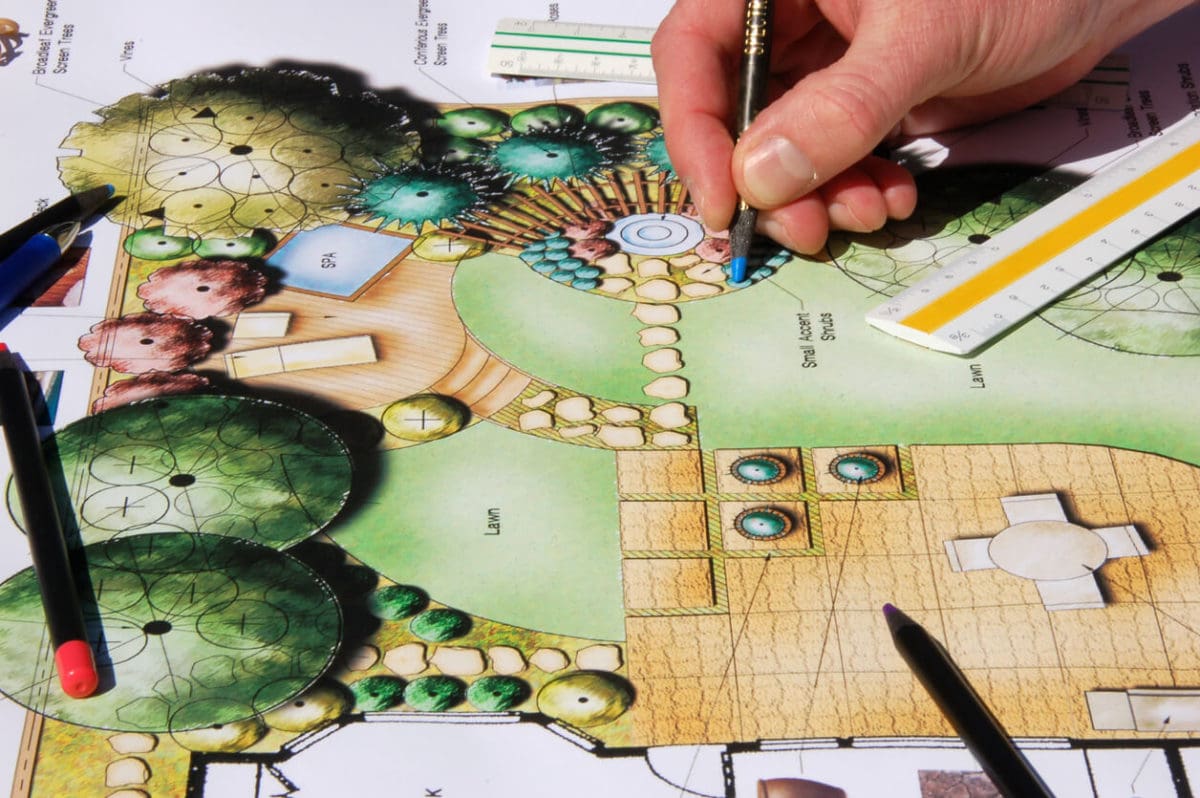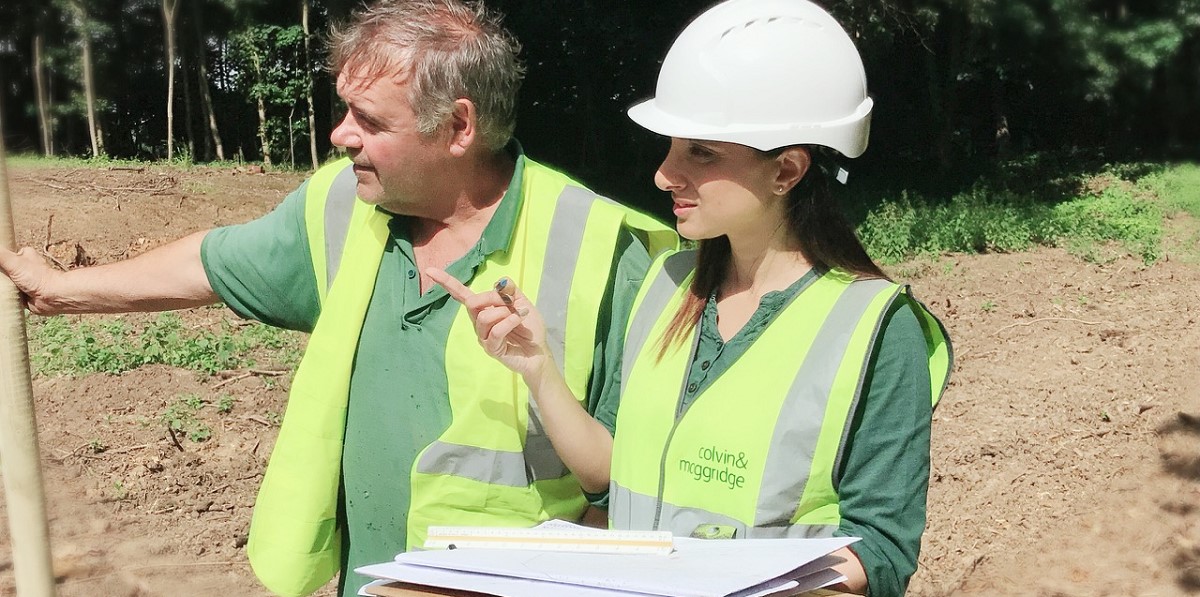Home>diy>Planning & Engineering>What Are The Requirements For Becoming A Landscape Architect?


Planning & Engineering
What Are The Requirements For Becoming A Landscape Architect?
Modified: February 25, 2024
Learn the essential requirements for pursuing a career in landscape architecture, including planning and engineering skills. Get expert advice to become a successful landscape architect.
(Many of the links in this article redirect to a specific reviewed product. Your purchase of these products through affiliate links helps to generate commission for Storables.com, at no extra cost. Learn more)
Introduction
Becoming a landscape architect is an exciting and fulfilling career choice for individuals who have a passion for the environment, design, and creating beautiful outdoor spaces. These professionals have the opportunity to shape the way we interact with our surroundings and make a positive impact on the world around us.
In order to embark on this career path, it’s important to understand the requirements and steps involved in becoming a landscape architect. From education and degree programs to licensing and professional organizations, there are several key elements to consider.
In this article, we will explore the various requirements for becoming a landscape architect and provide you with a comprehensive guide to help you navigate your way towards this rewarding profession.
Key Takeaways:
- Becoming a landscape architect requires a blend of accredited education, licensure, and a diverse skill set including design creativity, problem-solving, and effective communication. Internships, work experience, and networking are also vital for success.
- Continual learning and professional development are essential for landscape architects to stay at the forefront of the field. Engaging with professional organizations, pursuing certifications, and attending industry events are key to ongoing growth and success.
Education and Degree
One of the fundamental requirements for becoming a landscape architect is obtaining the appropriate education and degree. Most aspiring landscape architects pursue a bachelor’s or master’s degree in landscape architecture, which provides them with a strong foundation in the principles and practices of the field.
These degree programs typically cover a wide range of subjects, including landscape design, plant materials, environmental science, site planning, and construction techniques. Students also gain valuable skills in computer-aided design (CAD), 3D modeling, and project management.
When choosing a degree program, it’s important to ensure that it is accredited by the Landscape Architectural Accreditation Board (LAAB). Accreditation ensures that the program meets rigorous academic standards and prepares students for professional practice.
While a bachelor’s degree is the minimum requirement, some individuals choose to pursue a master’s degree to further enhance their knowledge and skills. A master’s degree provides a deeper understanding of advanced topics in landscape architecture and may open up opportunities for specialization.
During their academic journey, students are encouraged to gain hands-on experience through internships or co-op programs. These opportunities allow students to apply their classroom knowledge in real-world settings and develop valuable practical skills.
Accreditation and Licensing
In order to become a licensed landscape architect, it is necessary to obtain the appropriate accreditation and licensing. This helps ensure that professionals in the field meet certain standards of competency and ethical conduct.
Accreditation for landscape architects is typically granted by the Council of Landscape Architectural Registration Boards (CLARB) in the United States. The accreditation process involves a thorough evaluation of an individual’s education, experience, and examination results.
Once an individual has completed the required education and internship hours, they must pass the Landscape Architect Registration Examination (LARE). This exam consists of several sections that assess different aspects of landscape architectural practice.
Upon passing the LARE, aspiring landscape architects can then apply for licensure within their respective state or jurisdiction. Licensure requirements vary by location, but typically involve submitting an application, paying a fee, and demonstrating proof of education and experience.
Obtaining a professional license is important as it legally allows individuals to practice landscape architecture and use the title “landscape architect.” It provides credibility and demonstrates a commitment to maintaining high standards in the field.
It’s worth noting that licensure requirements may also include continuing education credits to ensure that professionals stay up-to-date with the latest developments in their field. This helps promote ongoing professional development and ensures that landscape architects are equipped with the knowledge and skills necessary to provide quality services to clients.
Knowledge and Skills
Besides obtaining the necessary education and licensing, landscape architects must possess a wide range of knowledge and skills to excel in their profession. These skills extend beyond simply designing outdoor spaces and require a strong understanding of various disciplines.
First and foremost, landscape architects should have a solid understanding of environmental science and sustainability. They need to consider factors such as soil conditions, water management, and ecological impact when designing landscapes.
Additionally, professionals in this field should have a creative eye for design and possess strong artistic skills. This includes having an understanding of color theory, composition, and spatial planning. They must be able to conceptualize ideas and effectively communicate them through hand-drawn sketches, computer renderings, or 3D models.
Strong analytical and problem-solving skills are also crucial for landscape architects. They need to be able to assess site conditions, analyze client needs, and develop innovative solutions that meet both aesthetic and functional requirements.
Communication skills are a must-have for landscape architects, as they often work closely with clients, contractors, and other professionals. They must be able to listen actively, articulate their design concepts, and collaborate effectively to bring their vision to life.
Proficiency in computer-aided design (CAD) software is essential in today’s digital age. Landscape architects use this technology to create detailed plans, produce accurate drawings, and visualize their designs in 3D. Familiarity with other software and tools like Geographic Information Systems (GIS) and Building Information Modeling (BIM) can also be advantageous.
Lastly, landscape architects should possess project management skills to effectively oversee the implementation of their designs. This includes budgeting, time management, and the ability to coordinate with contractors and suppliers.
Continual learning and keeping up with industry trends are important for landscape architects to stay cutting-edge and provide the best possible solutions to their clients.
Before pursuing a career in landscape architecture, it’s important to research the specific education and licensing requirements in your area. This typically includes a bachelor’s or master’s degree in landscape architecture and passing the Landscape Architect Registration Examination.
Internship and Work Experience
Obtaining internship and work experience is a crucial step in the journey to becoming a landscape architect. It allows aspiring professionals to gain hands-on experience, develop practical skills, and build a strong professional network.
Many landscape architecture programs require students to complete internships as part of their degree requirements. These internships provide valuable opportunities for students to work alongside experienced professionals, learn about the day-to-day practices of the field, and apply their classroom knowledge in real-world scenarios.
Internships can be found at landscape architecture firms, government agencies, nonprofit organizations, or even in-house design departments. They can range from a few months to a year, depending on the specific program or organization.
During an internship, aspiring landscape architects may be involved in various tasks, such as site analysis, project research, drafting and modeling, and assisting with client presentations. They may also have the chance to shadow senior professionals and participate in design charrettes or site visits.
Internships provide a valuable opportunity to showcase skills and work ethic, which can lead to potential job offers or recommendations for future employment. They also offer insight into different specialties within the field, helping individuals determine their interests and career goals.
Work experience beyond internships is also important in establishing oneself as a competent and experienced landscape architect. Many professionals start their careers by working for established firms, where they can further refine their skills and learn from experienced mentors.
Building a portfolio of completed projects is crucial in showcasing one’s expertise and design capabilities. It is important to document and present past work, including designs, plans, and visual representations.
Networking within the industry is also key to finding job opportunities and staying connected in the field. Attending professional events, conferences, and joining industry organizations can provide valuable networking opportunities and allow landscape architects to stay updated on the latest trends and advancements in the field.
Combining internships, work experience, and networking can greatly enhance one’s chances of securing a rewarding position as a landscape architect and pave the way for a successful career in the field.
Read more: How To Become Landscape Architect
Professional Organizations and Networking
Engaging with professional organizations and actively networking within the landscape architecture community is vital for aspiring landscape architects to enhance their career prospects and stay connected in the field.
There are several prominent professional organizations in the landscape architecture industry, such as the American Society of Landscape Architects (ASLA) in the United States and the International Federation of Landscape Architects (IFLA) on a global scale. Joining these organizations can offer numerous benefits, including access to resources, professional development opportunities, and networking events.
Professional organizations often host conferences, workshops, and seminars where landscape architects can learn from industry experts, stay updated on the latest trends and innovations, and connect with like-minded professionals. Attending these events can provide valuable insights, foster collaboration, and open doors to potential job opportunities.
Networking is a crucial aspect of building a successful career in landscape architecture. Connecting with professionals in the field, including experienced landscape architects, potential employers, and colleagues, can provide valuable advice, mentorship, and potential partnerships.
Networking can take place in various settings, such as industry events, professional gatherings, or through online platforms and forums. It is important to actively engage in conversations, share insights and experiences, and be open to learning from others.
Participating in design competitions and volunteering in community projects can also be effective ways to network and showcase one’s skills and passion for the field. Engaging in these activities can not only expand professional connections but also provide opportunities to give back to the community and make a positive impact.
Building a strong online presence is also essential in today’s digital age. Creating a professional website or portfolio, utilizing social media platforms, and showcasing work on online platforms like Behance or Dribbble can help landscape architects gain visibility and attract clients or potential employers.
Overall, professional organizations and networking go hand in hand in establishing oneself as a credible and well-connected landscape architect. By actively participating in these avenues, aspiring landscape architects can expand their professional circle, stay informed about industry trends, and foster lifelong connections that can contribute to their success in the field.
Continuing Education and Professional Development
Continuing education and professional development play a vital role in the career of landscape architects. The field is constantly evolving, with new technologies, design approaches, and sustainability practices emerging regularly. Staying up-to-date with these advancements and expanding one’s knowledge base is essential for professional growth.
Many professional organizations, such as the American Society of Landscape Architects (ASLA), offer a variety of continuing education programs and resources. These programs may include seminars, webinars, workshops, and online courses that cover a wide range of topics relevant to landscape architecture.
Continuing education not only allows landscape architects to stay current with industry trends, but it also provides an opportunity to gain specialized skills and knowledge in specific areas of interest. This may include topics such as sustainable design, urban planning, or digital modeling techniques.
Additionally, landscape architects can pursue certifications or advanced degrees to further enhance their professional credentials and expertise. Certifications, such as the Sustainable Sites Initiative (SITES) accreditation, focus on specific aspects of landscape architecture, such as sustainability and ecological design. These certifications demonstrate a commitment to excellence in the field.
Engaging in research and staying involved in academic institutions or research organizations can also contribute to professional development. Research allows landscape architects to explore innovative design concepts, conduct feasibility studies, and contribute to the body of knowledge within the field.
Attending industry conferences, workshops, and seminars is another valuable way to continue professional development. These events offer opportunities to learn from renowned experts, engage in discussions about current issues, and gain exposure to cutting-edge projects and ideas.
It is important for landscape architects to continuously seek out learning opportunities and remain curious about new developments in the field. By investing in professional development, they can enhance their skills, broaden their perspectives, and create a competitive edge in the industry.
Conclusion
Becoming a landscape architect requires a combination of education, experience, and ongoing professional development. It is a rewarding and fulfilling career that allows individuals to make a positive impact on the environment and create beautiful and functional outdoor spaces.
To embark on the path of becoming a landscape architect, one should start by pursuing a bachelor’s or master’s degree in landscape architecture from an accredited institution. These degree programs provide a comprehensive education in the principles and practices of the field.
Obtaining accreditation and licensure through organizations such as the Council of Landscape Architectural Registration Boards (CLARB) is crucial to legally practice as a landscape architect. This process involves passing the Landscape Architect Registration Examination (LARE), which assesses competency in various aspects of the profession.
Having a strong set of knowledge and skills is essential for success in the field. Landscape architects should have a deep understanding of environmental science, creativity in design, problem-solving abilities, and effective communication and collaboration skills.
Gaining internship and work experience, both during academic studies and beyond, is crucial to honing practical skills, building a portfolio, and establishing professional connections. Networking within the landscape architecture community, participating in industry events, and joining professional organizations can open doors to job opportunities and further growth.
Continuing education and professional development play a key role in staying current with industry advancements and expanding one’s expertise. Engaging in ongoing learning through workshops, seminars, certifications, and pursuing advanced degrees ensure that landscape architects stay at the forefront of the field.
By meeting these requirements and continuously learning and evolving, landscape architects can thrive in their careers and contribute to the creation of sustainable, beautiful, and functional outdoor environments. As professionals dedicated to enhancing our surroundings, landscape architects have the ability to leave a lasting positive impact on the world.
Frequently Asked Questions about What Are The Requirements For Becoming A Landscape Architect?
Was this page helpful?
At Storables.com, we guarantee accurate and reliable information. Our content, validated by Expert Board Contributors, is crafted following stringent Editorial Policies. We're committed to providing you with well-researched, expert-backed insights for all your informational needs.















0 thoughts on “What Are The Requirements For Becoming A Landscape Architect?”